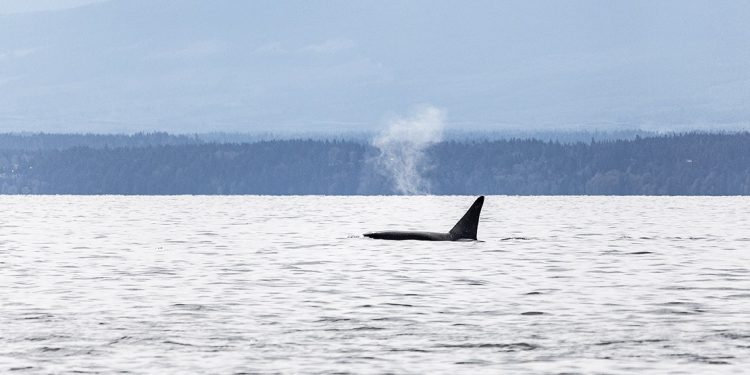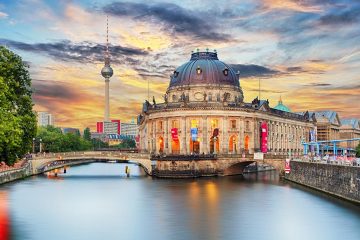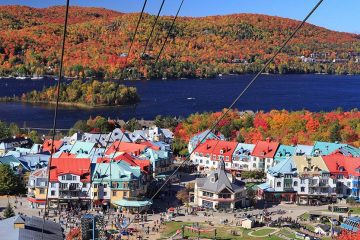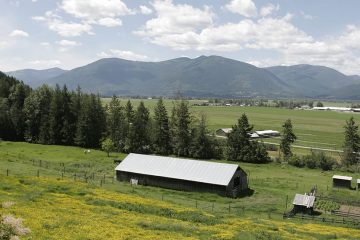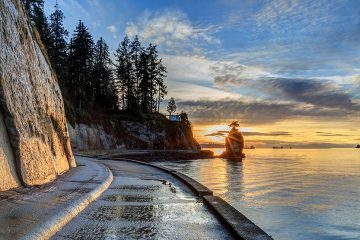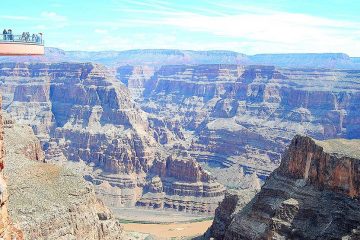Whale Watching In Vancouver
Thriller Whales – a Ringside Seat for Orca Watching
Vancouver, BC Canada – On this near perfect summer day, our boat takes off from Steveston harbor and heads out towards the mouth of the Fraser River. A light heat haze hangs over the Gulf Islands, turning them into smudged bruises against a sky streaked with feather-boa clouds. Somewhere in the sun-glinted waters at Roberts Bank is a pod of killer whales.
“You’re lucky,” says our accompanying naturalist, Mary Taitt, “Sometimes we have travel out to the Gulf Islands or the straits of Juan de Fuca. But today, we don’t have to go very far.”
She’s right.
About forty-five minutes after leaving Steveston, near Vancouver, we get our first glimpse of the orcas: small black conical dots dipping and rising through the sequined flash of waves. A gasp of delight runs through the passengers, and Mary adds, her voice rising with excitement. “They’re coming directly towards us. It looks as though they are going to pass right in front of our bow.”
For the next while we have ringside seats at a magnificent performance: the Orcas-about twenty or more-arch, leap and re-submerge in a synchronized, rhythmic water ballet. Hard to imagine such fluid grace in creatures approximately 7 to 9 meters long and weighing 8000 kilos on average. An underwater microphone eavesdrops on their “conversation” as they go by -a series of whistles, hoots and clicks.
Mary points out individuals-and it sounds as though she is talking about an eccentric but loveable family whom she has known for years. “This is ‘J Pod’.” she says. “See that big guy there, with the wavy dorsal fin riding ahead of the rest? He’s Ruffles, the 49-year old leader of the group. And that’s Granny-she’s about 89 years old, which is an extraordinarily long life span for an Orca.”
The dowager Queen Mum of the family surfaces briefly as she gamely keeps pace with her children and grand-children. There are several babies in the group, and like toddlers anxious for reassurance, they swim right alongside their respective Mums.
As cameras click madly, Mary goes on to tell us some known facts about Killer Whales. The largest of the dolphin species, they have a complex matriarchal social structure, well defined behavior patterns and communicate in “dialects” which are specific to their own pod or sub-pod.
Interestingly enough, they are also incest-averse. The males do not mate with the females within their own pod, so Ruffles though he is head honcho of the group, is not the daddy of the youngsters in J Pod. He is something of an ageing dude, and Mary points out that this could present a problem in the future. Everett, the next oldest male, died of an infection at the age of 22, just as he was coming into sexual maturity-which now leaves only two 9-year-old pre-adolescent males within the J Pod structure.
The capital of Germany is full of incredible experiences, from reminders of the past to modern wonders. Here's what to do in Berlin for a memorable trip.
Apart from J Pod, there are two other pods which make up our resident Southern Community of Killer Whales i.e. K Pod and L Pod. In addition to these “resident” pods, there are “off-shore” Orca groups, as well as “transient” whales-each with marked behavioral characteristics. While the “resident” and “off-shore” Killer Whales are fish eaters, “transient” Orcas are ferocious killers, attacking and devouring everything in sight, including mammals such as harbor seals, porpoises, sea lions, penguins and dolphins.
J Pod is traveling at an astonishingly brisk pace. Ruffles up ahead by about 500 yards seems intent on getting to the mouth of the Fraser, with its bounty of sockeye salmon. We keep a parallel course, about 100 meters away (a guideline honored by all whale watch operators) on the seaward side of the pod. Occasionally one or another of them breaks off from the group’s tight formation to pop up vertically and survey the scene. Others pause to lob-tail-a forceful flap of their tail flukes-which looks like a playful “hi folks” but is more likely a signal to one of their comrades.
In a way it seems out of synch with the natural order of things to see killer whales swimming against the backdrop of an industrial coal-handling facility, the Tsawwassen ferry dock and a clutter of houses at Point Roberts. Whales belong to wilderness landscapes, where the sea laps against rocky shorelines fringed by forests and mountains.
Nonetheless, I’m amazed that a mere three-hour round trip from Steveston has afforded me the unforgettable thrill of seeing these superb animals up close. Besides which, Ruffles & Co. appear unperturbed at the incongruity of their surroundings and, when all’s said and done, that’s what really counts.
Getting There
- Steveston Village in the Municipality of Richmond is a 20-30 minute drive by car from the city of Vancouver.
- Public bus transport is also a convenient alternative.
Contact:
Vancouver Whale Watch
#210 – 12240 2nd Avenue,
Steveston, BC
Runs daily tours (lasting between 3 to 5 hours) from about May to October. Their custom-designed vessels are specially designed for wildlife viewing, and equipped with the latest in navigation and communication equipment. They are also a thrill to ride.
Phone (604) 274-9565 for further information on schedules and rates.
Author
Margaret Deefholts

